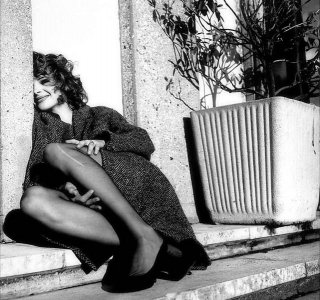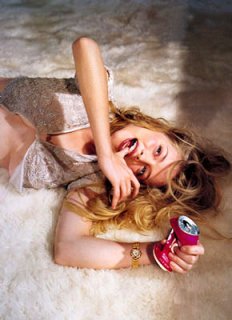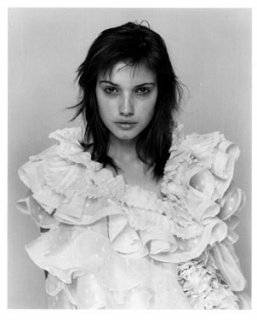fugfashion
Active Member
- Joined
- May 20, 2005
- Messages
- 2,277
- Reaction score
- 2








 Born in Paris, 1952
Born in Paris, 1952
Bettina Rheims started out photographing striptease artists and acrobats in the late 70s. Far from being simple reportage, this work involved studio-based reconstructions of the models' worlds. So there was already a hint of things to come: from the peculiar staged quality of the images, to a predilection for female nudes treated as portraits.
Published in Egoiste, these early images gained Rheims access to the worlds of press, fashion, cinema and advertising. Research and commissions then went hand in hand, and often even blended together - as is evident in her first two monographs (Bettina Rheims and Female Trouble). Strangers, models, literary figures, movie stars, transvestites, stuffed animals . . . Rheims examines all of her subjects with the same inquisitive yet sincere lens, revealing some kind of connection - even if only a gaze met - between photographer and subject.
Rheims' work is the result of exhaustive searching, happenstance and coincidence. She depth-charges the conventions of fashion photography by using non-professional models found on the streets of Paris and London, particularly ones who flout traditional gender roles - boys as diffident and pouting girls; girls as macho and gym-cut boys.
'Searching is exactly what is suppressed in advertising and fashion photography. Usually there is a person who scouts for and selects those models. All the photographer does is make the final choice' says Rheims. But she decides who appears in her work, even if that means seeking out strangers in bars and night clubs.
Rheims' 'Modern Lovers' series, begun in 1989 and recently re-exhibited in Australia, places models who display a minimum of gender identity against neutral backgrounds: just as their sex is undefined, so their skin shifts in and out of the background, giving an incorporeal effect to their being. As she notes: 'my desire was to photograph angels', but she also propels them forward, 'way beyond the image they had of themselves'.
Youth is central to Rheims' work, and her models are rarely older than 20 - they are personalities in the process of being formed. Her work riffs on debates in gender activism and queer identity, the instabilities that are mapped in cross-dressing, transvestism, and cross-gender identification: matters that, for her, question the established conventions of female sexuality.
Rheims frequently photographs celebrities, and addresses issues of voyeurism and confession, particularly in her 1991-92 project 'Chambre Close', a collaboration with Serge Bramly. This series can be seen as a work of fiction with an obsessive curiosity about women's bodies - trapped in hotel rooms with flowery wallpaper. Yet her work always returns from voyeurism to an examination of gender instability.
Rheims opened the Maison Européenne de la Photographie with a body of work entitled 'Why Did You Forsake Me'. These images - all magazine commissions - were mostly large, color portraits of famous women.
Prior to this, in 1995, Rheims had taken the official portrait of the President of France, then later went on to spend two years working on the photographic series 'INRI'. This further collaboration with Serge Bramly is a colossal project intended to represent the life of Jesus today. It is based on a close rereading of Biblical texts: drawing on original sources while seeking to combine history and legend. The series is comprised of 200 color photographs relating to the life of Christ, and a set of black and white photographs based on the miracles. After opening in Berlin at the Deutsches Historisches Museum in November 1999, 'INRI' moves on to a major world tour.
artfacts.net
Files Attached : Madonna , Juliet Binoche




 )
)



 have been trouble viewing the site lately...
have been trouble viewing the site lately...
























